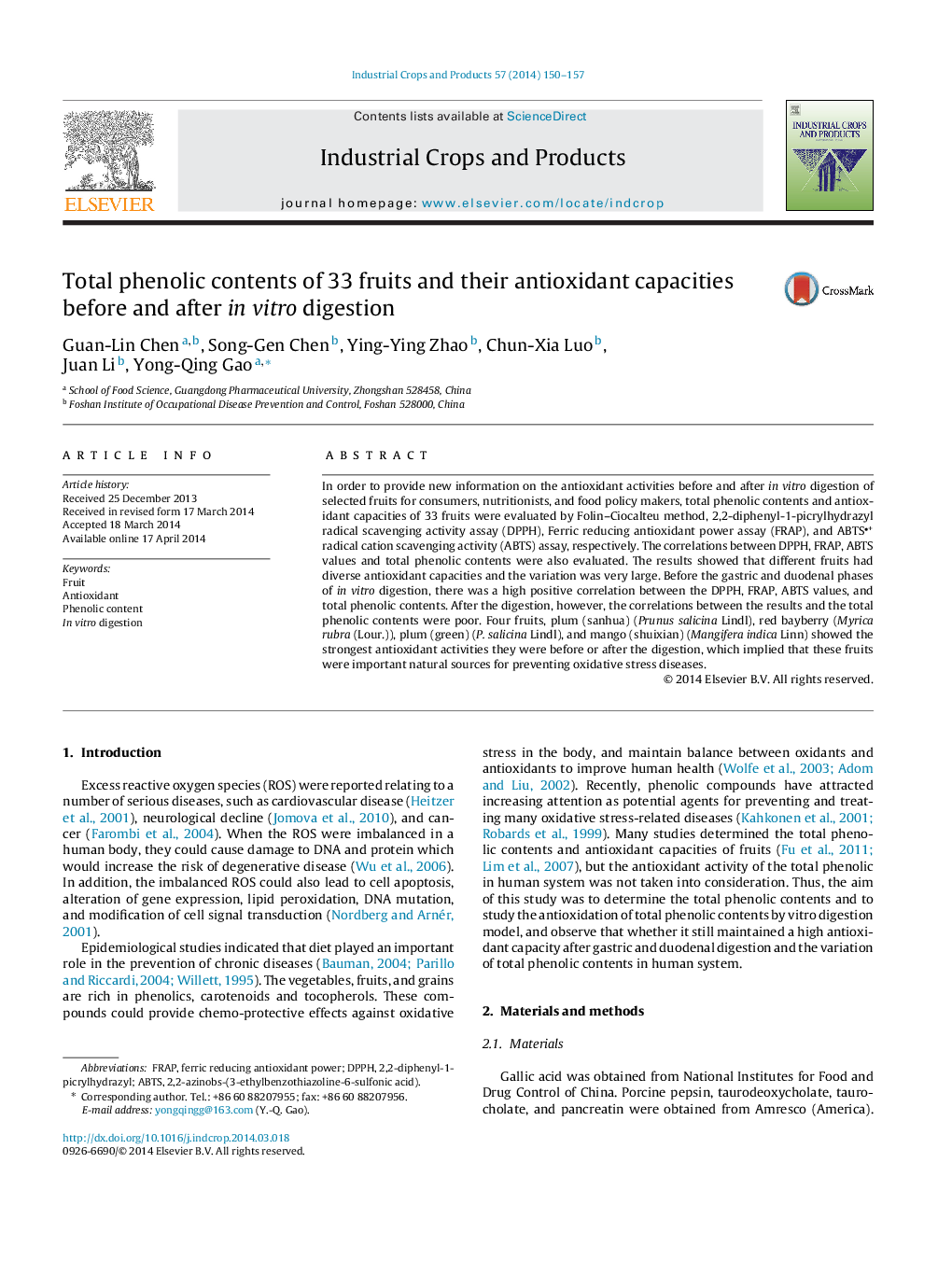| Article ID | Journal | Published Year | Pages | File Type |
|---|---|---|---|---|
| 4513327 | Industrial Crops and Products | 2014 | 8 Pages |
•First measurement concerning the fruits antioxidants following in vitro digestion.•New information on the antioxidants of fruits.•Multiple methods for the measurement of total antioxidant capacity were highlights.•The relations between DPPH value, FRAP value and TEAC value as well as total phenolic content were studied.
In order to provide new information on the antioxidant activities before and after in vitro digestion of selected fruits for consumers, nutritionists, and food policy makers, total phenolic contents and antioxidant capacities of 33 fruits were evaluated by Folin–Ciocalteu method, 2,2-diphenyl-1-picrylhydrazyl radical scavenging activity assay (DPPH), Ferric reducing antioxidant power assay (FRAP), and ABTS•+ radical cation scavenging activity (ABTS) assay, respectively. The correlations between DPPH, FRAP, ABTS values and total phenolic contents were also evaluated. The results showed that different fruits had diverse antioxidant capacities and the variation was very large. Before the gastric and duodenal phases of in vitro digestion, there was a high positive correlation between the DPPH, FRAP, ABTS values, and total phenolic contents. After the digestion, however, the correlations between the results and the total phenolic contents were poor. Four fruits, plum (sanhua) (Prunus salicina Lindl), red bayberry (Myrica rubra (Lour.)), plum (green) (P. salicina Lindl), and mango (shuixian) (Mangifera indica Linn) showed the strongest antioxidant activities they were before or after the digestion, which implied that these fruits were important natural sources for preventing oxidative stress diseases.
